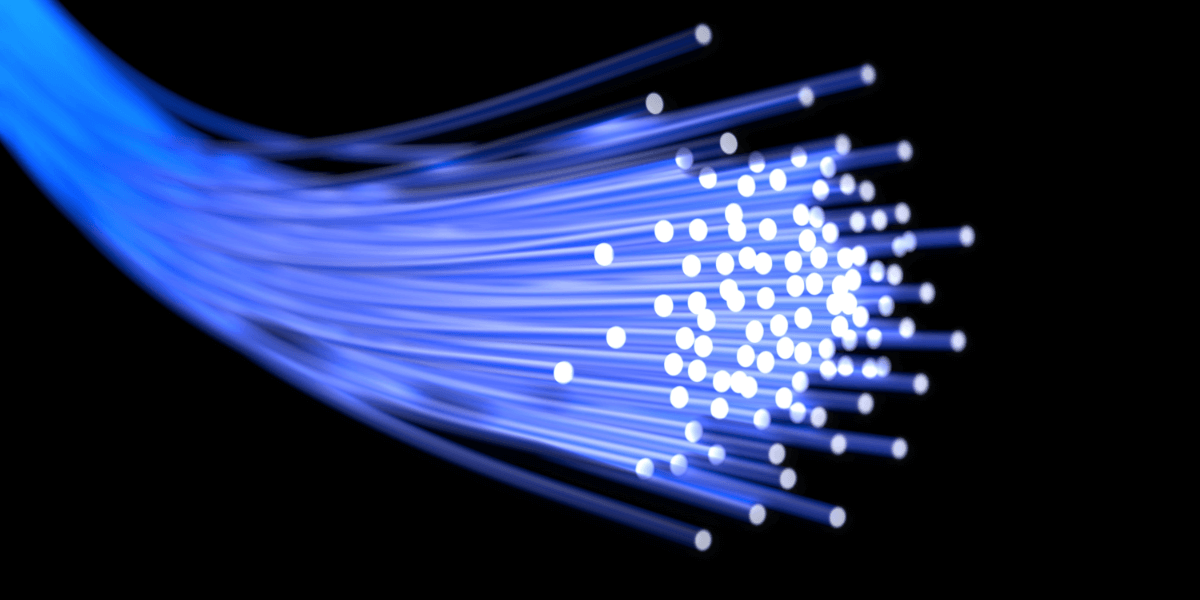Is Fiber Internet Good for Your Home Value?

Table of Contents
Is fiber internet good for your home value? In short, yes. Today’s homebuyers aren’t just looking for granite countertops and walk-in closets. They’re hunting for something far more valuable in our hyperconnected world: lightning-fast, reliable internet that can power their digital lives without a single hiccup.
Welcome to the fiber revolution, where internet infrastructure has become as crucial to property values as location, schools, and curb appeal. FBA’s 2023 research showed that fiber brought 4.9% in home value, transforming high-speed connectivity from a luxury into a necessity that directly impacts your bottom line [1].
Fiber’s Impact on Property Values
Real estate has always been about location, location, location. But it’s becoming more about connection, connection, connection. The statistics paint a compelling picture of the transformative effect of fiber internet on property values across America.
According to a study by Fiber to the Home (FTTH) Council Americas, fiber internet capability in the home can have a direct impact on the home’s future value, by as much as 3.1 percent [2]. To put that into perspective, that’s $9,000 on a $300,000 house—equivalent to adding a fireplace or half bathroom without the construction headaches.
The rental market shows even more dramatic results. According to the Fiber Broadband Association, properties with fiber internet command about 12.8% higher rents than those without [1]. For property investors and landlords, this translates into immediate and ongoing revenue increases that compound over time.

Location matters
Geographic and Demographic Factors
Fiber internet’s impact on property values varies significantly based on location and target demographics. Rural areas often see the most dramatic value increases from fiber installation. Finally, fiber internet services can provide a competitive advantage for rural properties that have these services available. In a crowded real estate market, properties with fiber internet services can stand out from the competition and attract more buyers. This can lead to higher property values and faster sales.
Rural properties traditionally struggled with internet connectivity, making fiber availability a genuine differentiator. Remote workers, retirees, and families seeking affordable housing outside urban cores increasingly consider rural areas—but only if adequate internet infrastructure exists.
Investment Considerations and ROI
For property owners considering fiber installation, understanding the investment dynamics proves crucial for making sound financial decisions. While installation costs vary based on property size, location, and existing infrastructure, the return on investment typically justifies the expense.
Installation costs have decreased significantly as fiber networks expand and installation processes become more efficient. Many internet service providers offer incentives or share installation costs for new construction or major retrofits, further improving the economic proposition.
The timeline for realizing the benefits of fiber’s value varies by market conditions and property type. Rental properties often see immediate returns through higher rents and improved tenant retention. Sale properties may need to wait for market timing, but the value increase typically exceeds installation costs by substantial margins.
Long-term value preservation represents another crucial consideration as fiber becomes increasingly standard in new construction, existing properties without fiber risk becoming outdated and less competitive. Early adoption helps maintain market competitiveness and prevents future obsolescence.
Implementation Strategies for Property Owners
Property owners considering fiber installation should develop strategic approaches that maximize value while minimizing costs and disruption. Several strategies can optimize the implementation process of fiber.
New construction offers the most cost-effective opportunity for fiber installation. Building fiber infrastructure during initial construction costs significantly less than retrofitting existing properties.
Existing property retrofits require more careful planning and cost analysis. Single-family homes typically face lower installation barriers than multi-unit buildings, which may require more extensive infrastructure upgrades. However, fiber is a versatile solution for multifamily communities, whether for constructing new buildings or upgrading existing ones. Its flexibility allows developers to integrate it seamlessly into new projects, while also providing cost-effective options for retrofitting older properties.
Community-wide installations often provide economies of scale that reduce per-unit costs while creating neighborhood-wide value increases. These coordinated installations can create substantial competitive advantages for entire neighborhoods.
Overcoming Common Obstacles
Despite the clear benefits of fiber internet, property owners may encounter obstacles during the evaluation and implementation process. Understanding these challenges helps develop effective solutions.
Cost concerns represent the most common hesitation. While fiber installation requires upfront investment, the long-term value creation typically justifies the expense. Property owners should evaluate the total cost of ownership, including ongoing operational benefits and value appreciation, rather than focusing solely on initial costs.
Technical complexity can seem daunting for property owners unfamiliar with internet infrastructure. However, most internet service providers handle the entire installation process, from design through activation. Property owners typically only need to provide access and coordinate the timing.
Timing concerns may delay fiber implementation as owners wait for optimal market conditions. However, the value benefits often begin immediately upon installation, and early adoption can provide competitive advantages that diminish over time as fiber becomes more common.

Evaluate the impact
Measuring Success and Value Creation
Property owners should establish metrics to evaluate the success of fiber installation and the value created. These measurements help optimize future decisions and demonstrate return on investment.
Rental properties can track metrics including rent premiums, tenant retention rates, vacancy periods, and tenant satisfaction scores. These operational improvements often justify fiber investment even before considering property value appreciation.
Sale properties should monitor market positioning, showing activity, time on market, and final sale prices compared to similar properties without fiber. Real estate professionals can provide valuable insights into how fiber availability affects buyer interest and pricing negotiations.
Long-term value tracking involves monitoring property tax assessments, refinancing appraisals, and market comparisons over time. These measurements help quantify fiber’s ongoing value contribution and inform future property improvement decisions.
I’m Ready to Find Fiber in My Area!
The evidence is clear: fiber internet has transformed from a luxury amenity into a necessity that directly impacts property values, rental income, and marketability. Whether you’re a homeowner looking to increase your property’s value, an investor seeking competitive advantages, or a property manager trying to attract and retain tenants, fiber internet offers compelling returns on investment.
The digital revolution isn’t coming—it’s here. Properties equipped with fiber infrastructure will thrive in our increasingly connected world, while those relying on outdated technology risk obsolescence and declining competitiveness.
Don’t let your property fall behind in the fiber revolution. The time to act is now, while early adoption can still provide meaningful competitive advantages. Your property’s future value—and your financial success—may depend on the connectivity choices you make today.
Discover if Fidium Fiber is available in your area by entering your zip code her, and start maximizing your property’s potential.
Sources
[1] Fiberbroadband.org. “Fiber Broadband Driving Home Sales and Value"
[2] Atlantech.net. “Increase Commercial Real Estate Value Fiber Internet"
